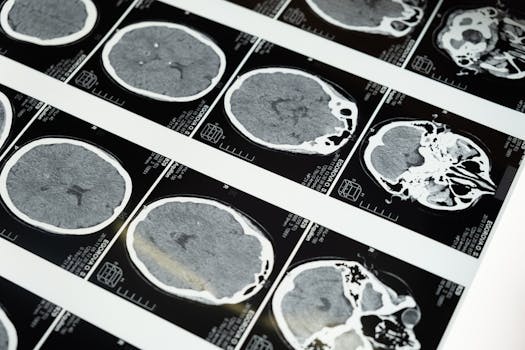Innovations in Medical Imaging Technology
Medical imaging technology has undergone remarkable advancements over the past few decades. From the invention of X-rays to the latest developments in artificial intelligence (AI) and machine learning, these innovations have revolutionized the way healthcare professionals diagnose and treat various medical conditions.

This article explores the significant milestones and emerging trends in medical imaging technology, providing an in-depth look at how these advancements are shaping the future of healthcare.
Historical Milestones in Medical Imaging
The journey of medical imaging began in 1895 when Wilhelm Conrad Roentgen discovered X-rays. This breakthrough allowed doctors to view inside the human body without invasive surgery, marking a significant leap in diagnostic medicine. Following this, the development of computed tomography (CT) scans in the 1970s provided even more detailed images, enabling precise diagnoses of complex conditions.
Magnetic Resonance Imaging (MRI), introduced in the 1980s, further enhanced diagnostic capabilities by using magnetic fields and radio waves to produce detailed images of soft tissues. The advent of ultrasound technology around the same period made it possible to visualize organs in real-time, significantly benefiting prenatal care and cardiology.
Positron Emission Tomography (PET) scans emerged in the late 20th century, allowing for the observation of metabolic processes in the body. These cumulative advancements laid a robust foundation for modern medical imaging techniques.
Modern Innovations in Medical Imaging
Recent years have witnessed a surge in innovations that leverage AI and machine learning to enhance image quality and diagnostic accuracy. AI algorithms can now analyze complex imaging data much faster than human radiologists, identifying patterns and anomalies with high precision.
- AI-Powered Diagnostics: Tools like Google's DeepMind and IBM Watson use machine learning to assist radiologists by providing second opinions and highlighting areas of concern.
- 3D Imaging: Techniques such as 3D mammography offer more detailed views, improving early detection rates for breast cancer.
- Portable Imaging Devices: Handheld ultrasound devices connected to smartphones are making imaging technology more accessible, especially in remote areas.
These innovations are not only improving diagnostic accuracy but also making imaging procedures faster and more patient-friendly.
Impact on Patient Care
The advancements in medical imaging have had a profound impact on patient care. Early detection of diseases like cancer has become more feasible, leading to better treatment outcomes. For instance, low-dose CT scans are now recommended for lung cancer screening in high-risk populations, reducing mortality rates significantly.
Moreover, improved imaging techniques have minimized the need for invasive procedures. Non-invasive methods like MRI-guided biopsies are becoming more common, reducing patient discomfort and recovery times. Enhanced imaging also aids in precise surgical planning, ensuring better outcomes and fewer complications.
A table illustrating some key impacts on patient care is provided below:
| Impact | Description |
|---|---|
| Early Disease Detection | Improved imaging techniques enable earlier diagnosis of conditions like cancer, leading to better treatment outcomes. |
| Reduced Invasiveness | Non-invasive imaging methods reduce the need for surgical interventions and associated risks. |
| Surgical Planning | Detailed images assist surgeons in planning precise procedures, minimizing complications. |
| Accessibility | Portable devices make advanced imaging accessible in remote or underserved areas. |
Challenges and Ethical Considerations
Despite these advancements, there are several challenges and ethical considerations that need addressing. One major concern is data privacy. With the increasing use of AI and cloud-based platforms for storing and analyzing medical images, safeguarding patient data becomes paramount. Regulatory frameworks like HIPAA in the United States aim to protect patient information but may need updates to keep pace with technological advancements.
Another challenge is ensuring equitable access to advanced imaging technologies. While urban healthcare centers may have cutting-edge equipment, rural areas often lag behind due to cost constraints and lack of infrastructure. Efforts are being made to bridge this gap through initiatives that provide funding and support for telemedicine and portable imaging solutions.
The Future of Medical Imaging Technology
The future of medical imaging looks promising with continuous advancements on the horizon. One exciting area is molecular imaging, which combines traditional imaging with molecular biology techniques to visualize cellular processes at a molecular level. This could lead to breakthroughs in understanding diseases at their earliest stages.
Another promising development is quantum computing's potential impact on medical imaging. Quantum algorithms could process vast amounts of data quickly, providing unprecedented insights into complex medical conditions. Additionally, augmented reality (AR) is being explored for use in surgical procedures, offering real-time guidance based on preoperative imaging data.
The integration of these emerging technologies promises to further enhance diagnostic accuracy, treatment planning, and overall patient care.
The field of medical imaging has come a long way since the discovery of X-rays. Each innovation has brought us closer to achieving accurate diagnoses and effective treatments with minimal invasiveness. From AI-powered diagnostics to portable imaging devices, modern advancements are making a significant impact on patient care by improving accessibility and precision.
The future holds even more exciting possibilities with developments like molecular imaging and quantum computing poised to revolutionize healthcare further. As we continue to innovate and address challenges such as data privacy and equitable access, medical imaging technology will undoubtedly play an increasingly vital role in shaping the future of medicine.